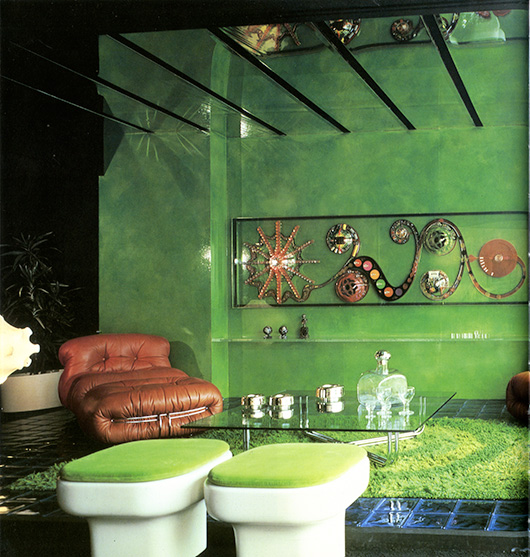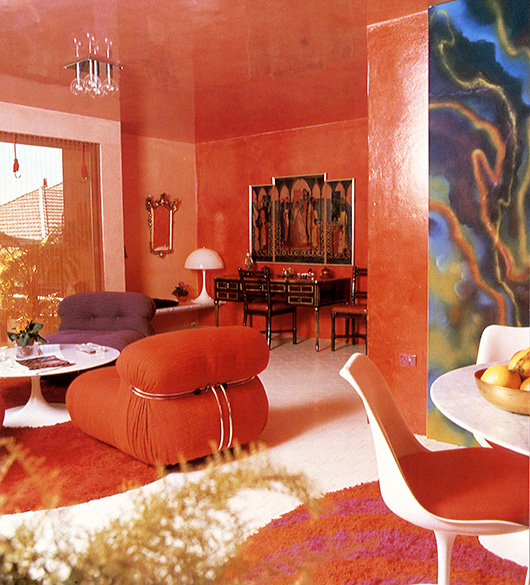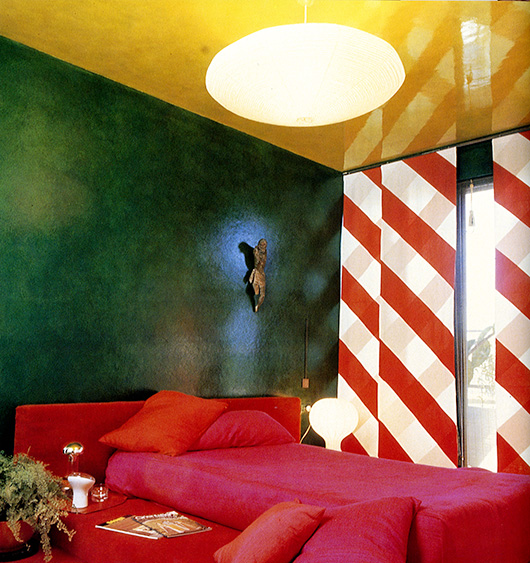Women from History: Best Modern Sydney
Marion Hall Best (nee Burkitt) attended Thea Proctor’s art and design classes in Sydney. Another country girl. Along with her painter sister Dora Sweetapple. Marion studied architecture for a year and became intrigued with the ideas of Harry Seidler and Buckminster Fuller. This was a time when women were seen merely as decorators. Marion always thought of herself as a designer.
She became very good at bouncing walls apart. She set up shop in Queen Street Woollahra as Sydney's first interior designer and became an expert in all things modern.
From 1951, Best worked as a founding member of the Society of Interior Designers of Australia (SIDA) to encourage public recognition of designers and to improve professional standards.
Best became known for her exhibition rooms, or 'personality' rooms. In these room she was able to express her new ideas untroubled by pesky clients or market demands.
In this case, a 'Room for Peter Sculthorpe.' The vivid green glazes showcase a Jack Meyer's musical sculpture, Magistretti table, Tobia Scarpa leather seats, and Architectural Fibreglass indoor/outdoor furniture.
Glazes became her forte. Layers of transparent paint thoughtfully applied to walls.
This stunning guest cottage in Castlecrag was designed for clients who were very open to Best's High Style.
She admitted "I just did to architectural finishes what friends who were artists were doing to their paintings". Friends like Justin O’Brien. The undercoat was an equal mixture of flat and enamel house paint, and the contrasting glaze a coat of Dulux gloss stained with translucent artists’ oils.
"It was the glazing technique that made the colours sing with such freedom and varying depth only possible with this new found technique. I was interested in Justin O'Brien's technique in oil painting of overlaying a heavy colour over a singing light one such as olive over a brilliant yellow, then scraping it off to a varying scale of transparency. The same with the reds overlaid over pink or greens or rich yellow, whichever he had in mind, and scraped away to such varying transparency of colour, tone and movement. It was this subtlety that made me realise the importance in glazing technique of the choice in undercoat colour for maximum subtlety or brilliance. There was no end to this beautiful discovery, and the variety and contrast of scale from light to dark is thrilling."
Makes for a thrilling apartment.
"Colours were never thoughtlessly used. If one wants to be spun into orbit on fabulous vibrant colour, with an emerald room off a vermilion room, the effects can be magical if other colours in the right scale and tone appear in paintings or through open doors, or mirrors; but is must be planned, and it must look free and not contrived. Whether high or low tone, the same applies. So too the pattern - they can mix, as Matisse has shown us but it is for the highly trained to do and not a salesman of wallpapers. Never for novelty and only a very high plane of intellectual artistry."
Thoroughly modern Marion.
Julia Ritson is a Melbourne artist. Her paintings investigate colour, abstraction and a long-standing fascination with the grid. Julia has enriched and extended her studio practice with a series of limited edition art scarves. She also produces an online journal dedicated to art and scarves and architecture.





